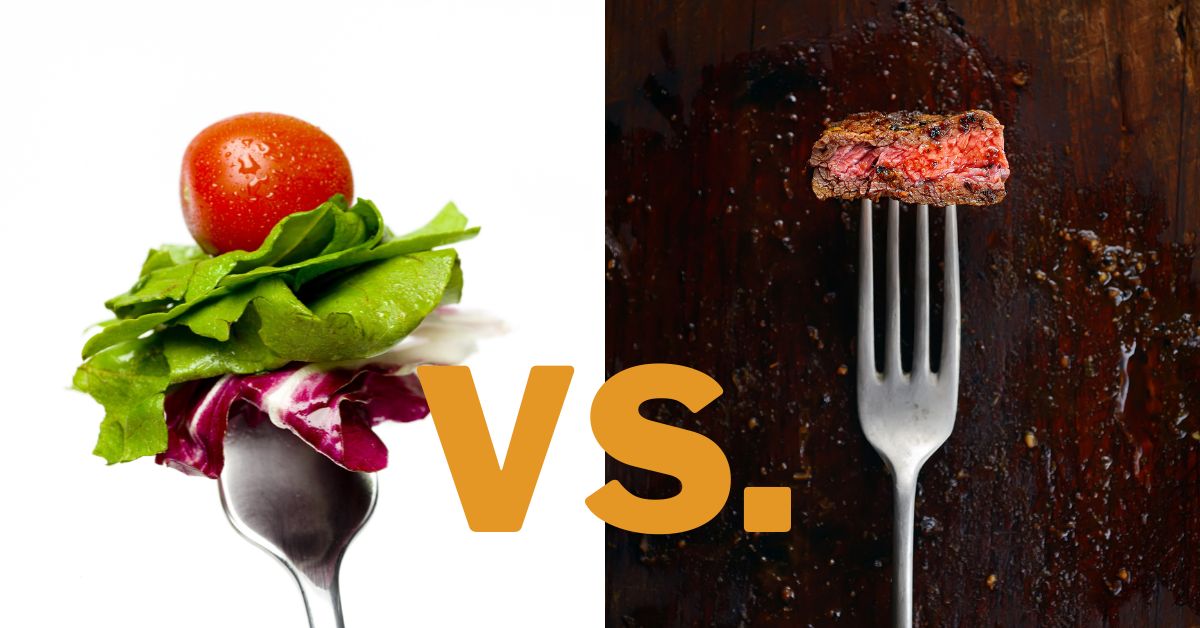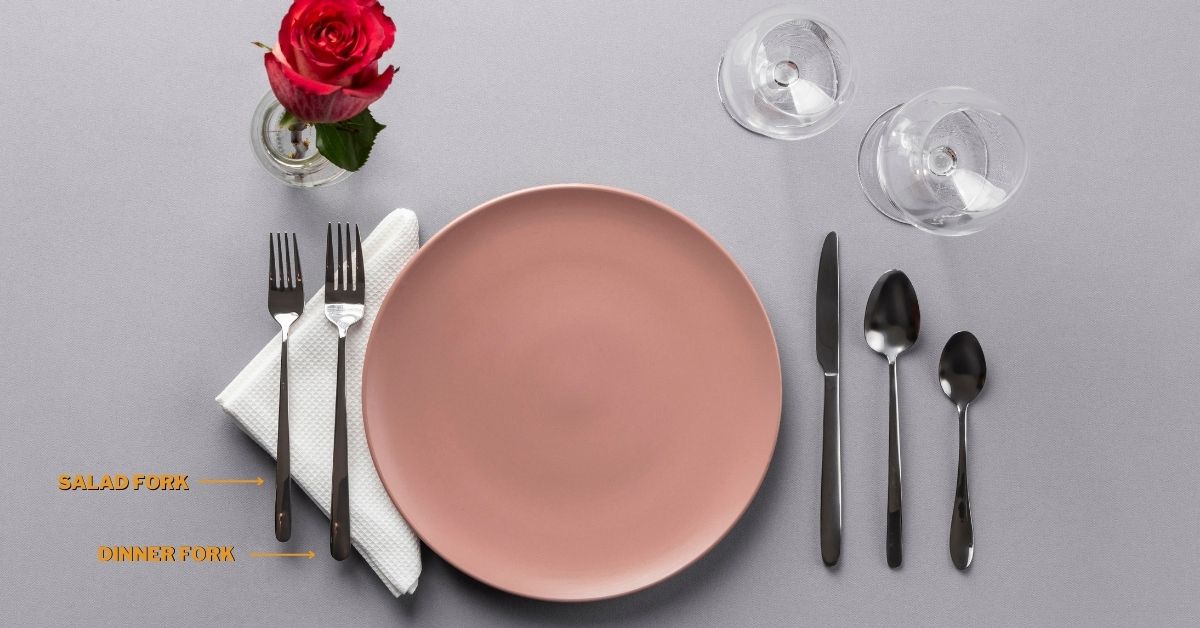Salad Fork vs. Dinner Fork: Placement & Differences

A salad fork and a dinner fork are the most used cutlery in the kitchen and share many similarities. They tend to be similar in size and shape and most often are placed next to one another on the dinner table. However, since one is a dinner fork and one is a salad fork, they are not the same; otherwise, there wouldn’t have been two. So what are the differences between a dinner fork and a salad fork?
The dinner fork s used for the main course, and the salad fork is used for the salad. They both stay on the left side of the plate in the order in which the courses are served. Therefore the salad fork is either to the left or right of the dinner fork. The dinner fork is the largest fork at the dinner table.
Seeing all those pieces of cutlery on both sides of your plate could be confusing, and not knowing which could get even a little embarrassing, especially if everyone around you seems to not have any trouble choosing the right piece. If you don’t know the difference between a salad and a dinner fork, worry not; you are not alone, and you’ve come to the right place to learn about it. In the following paragraphs, I will explain the differences between a dinner and a salad fork and give you a table that sums up those differences.
Salad Fork vs. Dinner Fork: Differences
As the names tell us, the salad fork is used for salad, and the dinner fork is used for the main course. Among their many similarities, there are also more than a few differences between them significant enough to distinguish them as two distinct types of forks. Those differences pertain to the placement, size, shape, and, of course, use.
Before we start take a look at a cheat sheet to help you out.
| Dinner fork | Salad fork | |
|---|---|---|
| Size | Continental- seven inches long; American-6,5 inches long. Heavier than a salad fork; | Four inches long; Wider with flatter tines; Lighter than the dinner fork. |
| Tines | Sharp and equally long and wide. | Flat tines, often the last line is usually wider than the other three; |
| Use | For the main course. Continental dinner fork for a formal setting. American dinner fork for an informal setting | For saladFor both formal in informal settings |
| Appearance | Narrower and more elegant-looking | Wider, flatter, and not as refined-looking |
| Placing | On the left side of the plate, either on the right or the left of the salad fork, depending on the order of the courses. | On the left side of the plate, either on the right or the left of the dinner fork, depending on the order of the courses. |
| Pairing | Paired with a corresponding dinner knife on the right side of the plate. | It doesn’t pair with a knife. |
Placement
The salad fork and the dinner fork are placed on the plate’s left side. Depending on the order of courses, the salad fork can be either on the left or on the right of the dinner fork.

So, for example, if the salad goes after the entrée, then it would be in the second position between the entrée (starter) fork and the dinner fork. If the entrée is the salad, then the salad fork would be on the right side of the dinner fork.
If you serve salad after the main course, the salad fork would be placed on the left side of the dinner fork.
To sum up, the place of the dinner and salad fork on the dinner table depends on the order of the courses. Both are on the left side of the plate, with the corresponding knives on the right side. Typically, the dinner fork is paired with a knife, while the salad fork is not, as the salad isn’t supposed to be additionally cut.
Uses
The use of the salad and dinner fork is the decisive factor that makes these types of forks different. The salad fork is used for salad, while the dinner fork is used for the main course, no matter what that course might be.
Many regard the dinner fork as a fork used for meat, but this is a misconception. The main course could be all vegetarian, containing no meat whatsoever, and you’d still use the dinner fork for it. So the contents of the main course have no impact on whether or not you use the dinner fork.
The dinner fork is also paired with a corresponding knife, placed on the right side of the plate. The salad fork doesn’t usually come with a salad knife, as the salad is already cut, and you don’t need to cut it additionally.
However, some salad forks come with the last time wider and sharper, which is intended to help you cut the larger chunks in the salad, should it contain them. You can use both the dinner fork and the salad for formal and informal settings.
Sizes
The dinner fork is the largest fork around your dinner plate. It has four tines, and all are the same size, width, and sharpness. Your dinner fork is paired with a correspondent dinner knife on the right side of the plate.
The continental dinner fork is ½ inch longer than the American dinner fork, which is used for an informal setting, while the continental dinner fork is used for formal occasions.
The continental dinner fork is seven inches long, narrower than the salad fork but also a little heavier. The tines of the dinner fork are sharp and all an equal size. The salad fork is 4 inches long, lighter than the dinner fork, and tines shorter than the dinner fork.
The tines of the salad fork are duller than those of the dinner fork and tend to be wider and flatter. There are salad forks intended for lettuce-containing salads or chunky salads that have the last time on the left noticeably wider with a tiny edge to help cut the chunks.
Appearance
The dinner fork and the salad fork are very different in appearance. The salad fork is smaller, flatter, and wider than the dinner fork. This is because the salad fork is intended for use on its own, meaning you don’t need a knife to pair it with; instead, the tines are made flatter with one time even wider than the others to substitute as a knife.
The salad fork is designed in such a way to be easy for you to both catch and cut the salad ingredients. Since you use it for salad, the tines are flatter than those of the dinner fork and not as sharp and spikey as the dinner fork is intended for meat, among other things.
On the other hand, the dinner fork is longer and heavier than the salad fork, is also narrower, and always has equal tines in length, width, and sharpness. In contrast, the salad fork often has one tine wider than the rest with a sharper edge to cut the salad chunks with.
For extra stability and leverage when cutting vegetables, the second and the third time of the salad fork are connected by a rod.
